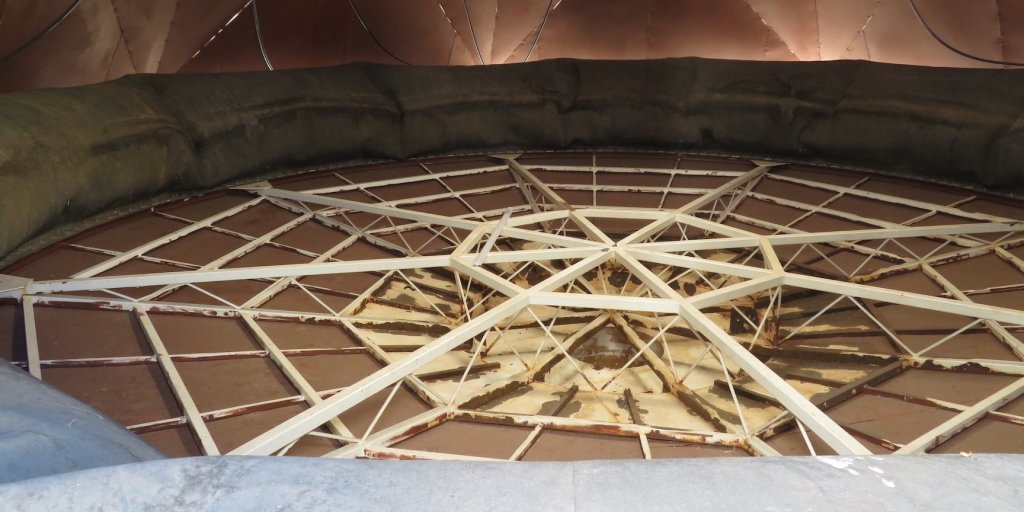
In preparation for our first pressure test of the expanded SAM vessel, we applied a thin fill of Dow-Corning 795 silicone to the channels where two original Test Module windows were replaced by a single steel hatch plate in late 2021, just enough to hold a temporary seal. 795 is an incredible product, remaining flexible after 35 years (even in external Arizona applications).
It is our intent to apply the method used by the Biospherians. While 795 provides a flexible, long-lasting seal, it is gas permeable. While a shallow seal will hold pressure immediately, it will leak more gas than a deeper seal, over time. Therefore we will ultimately apply a silicone bead approximately 3/4″ wide and 3/4″ deep for the given pressure differential.
After synchronizing the Vernier barometric pressure sensor and two cell phones with barometric sensors, all three of which register to one one-hundredth of a PSI (0.0n), and set the timer, Ezio and Kai remained outside while John and Luna were sealed within. We activated the lung blower in the SAM Air Intake Room (AIR), the lung rose, and … we could hear all kinds of leaks across the TM, 20′ and 40′ shipping containers! Most of these leaks were anticipated, some new and unexpected. It was an exciting event from start to finish. John and Luna marked leak points with blue painters tape while Kai recorded leak points with a camera on the outside. The test ran roughly one hour and twenty minutes, start to finish, and was a complete success given the function of the lung and what was learned.
We recorded a barometric pressure baseline, the start of the blower, rise in pressure, maximum pressure achieve when the lung plate lifted from the floor, and the gradual drop of the lung plate and pressure when it again sets down. We achieved roughly 50% of the desired 0.1 PSI increase in pressure, as calculated in our June 2021 pressure test.
John and Luna patched a number of holes and ran a second test the following day. The third test was run following the Mars Society conference.

